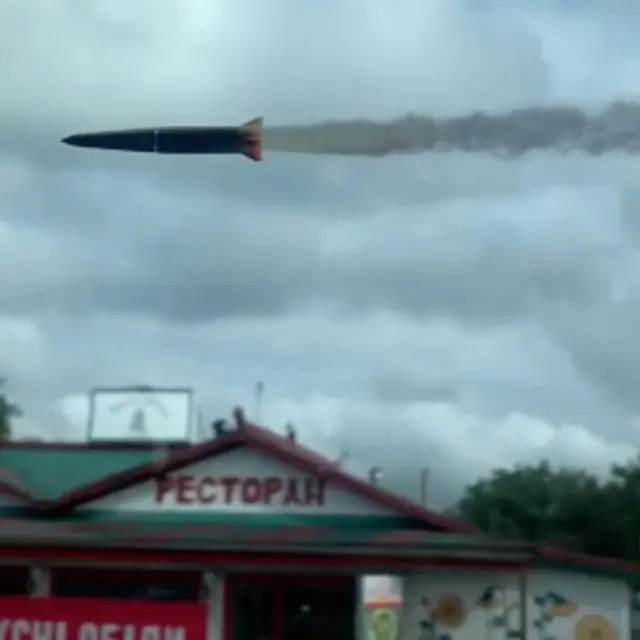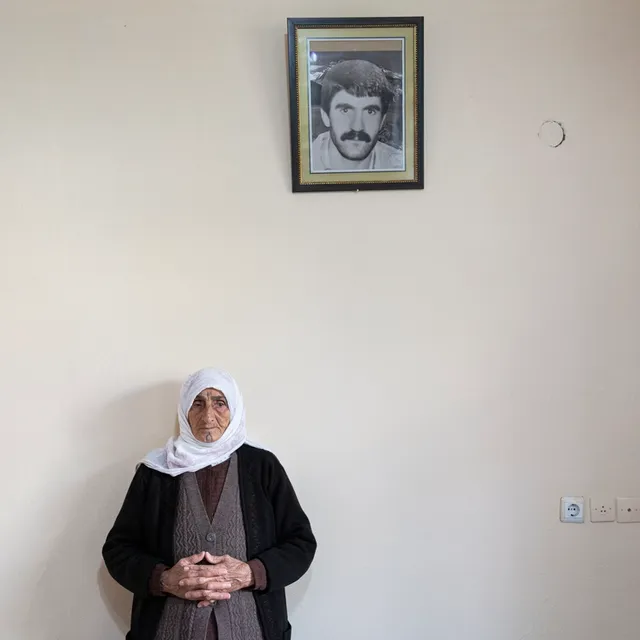Noor Abuarafeh
“Only the Earth Doesn't Tell its Secrets”
In 2013, in a gallery in Jerusalem, I encountered a photograph in which fourteen artists appeared. It hung on one of the abundant walls of the gallery office. I was told that it hung there before any of the current staff were recruited. They had no idea of its history or context.
The period of the photograph was what interested me. It was the oldest photograph that I had ever seen of an exhibition in Palestine. I deduced the time period because I recognised some of the figures – artists who appear in the photograph as youths. I wanted to know more about the context of the photograph, so I started to visit different art institutions to check if the photograph might be captured there, to see if there were any other photographs related that event.
It was only through this process that I realised there is no art archive in Palestine. There is no archive at all, as most of the current institutions were established after the Oslo accord in 1993, and this photo is definitely older than that.
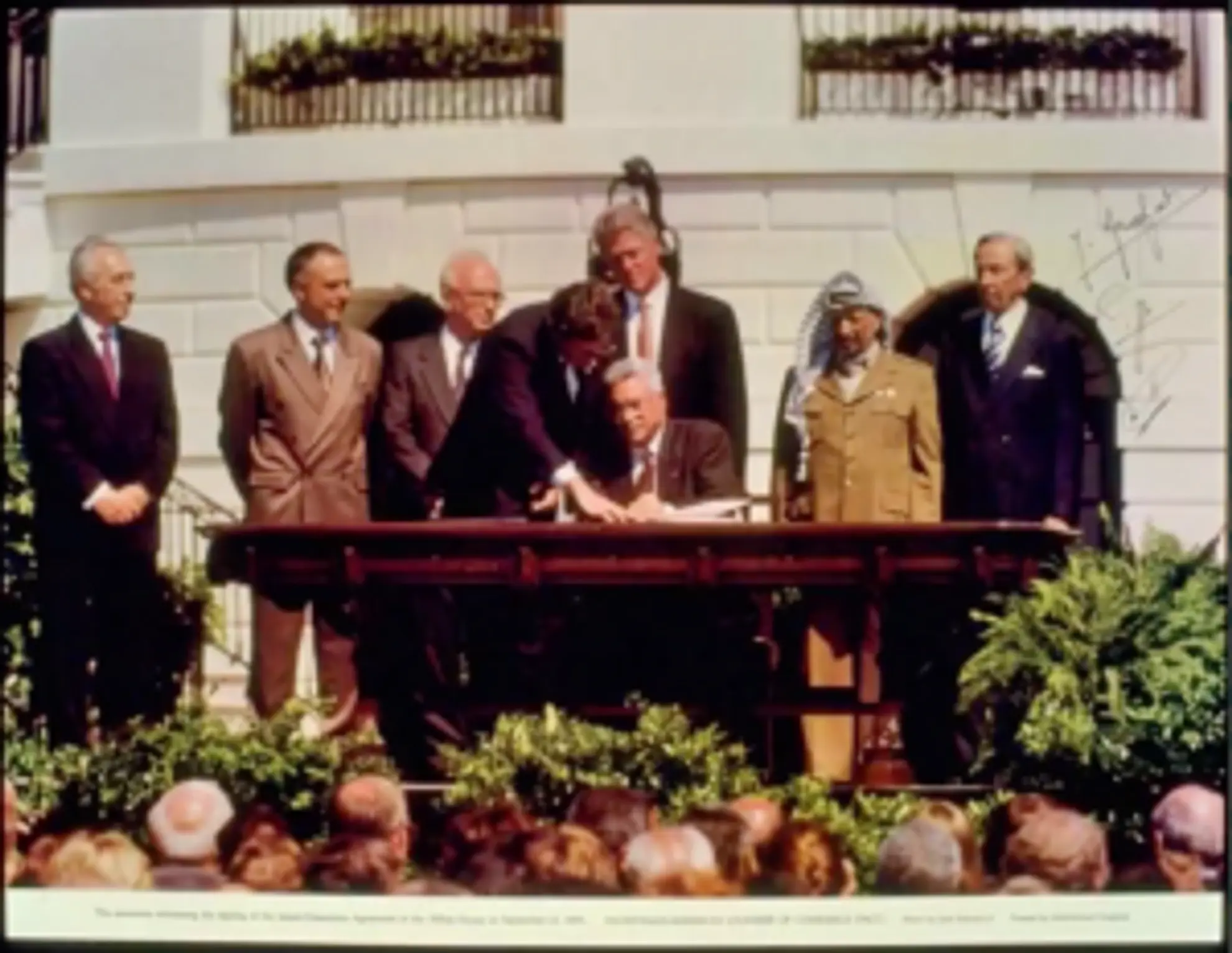
Looking at the photograph, I was able to recognise four artists who are still practicing today. These four artists became the main source of information that I have about this event. Listening to them in such a context I realised, would be the most effective way of knowing about the past. Through them, I learned that the photo came from an exhibition entitled “The First Spring Exhibition”, and that it took place in the main hall of Al-Hakawati theater in the city of Jerusalem.
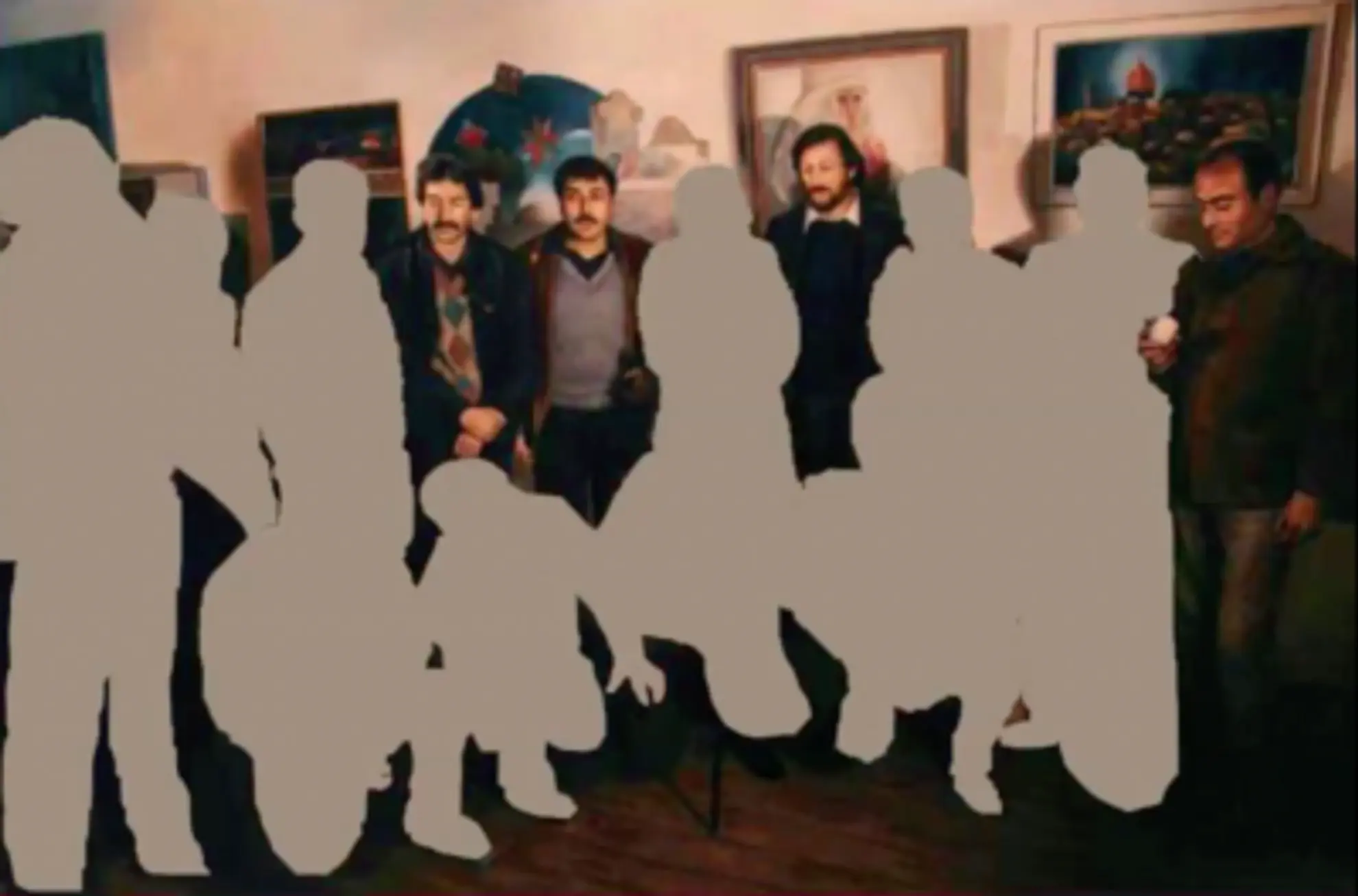
Artist Suliman Mansour named the other 10 artists in the photo, gave a brief description of each of their practices, and provided the contact of those who were still alive.
There was only one artist to which I couldn’t attribute any information besides his name, “Sager Al-Qateel. Not one of the figures in the image knew anything about him, where he lived, his practice, the whereabouts of his artworks. They couldn’t remember if they had shared any other exhibitions with him. Even in their personal archives, he was never present. It was as if he had disappeared from the personal archives, and even from the memory of those who had met him.
I also wondered about the photograph itself. It looked like a realistic painting of a photograph. I deduced this by looking at the paintings in the background, whose dimensions seemed unrealistic upon close inspection.
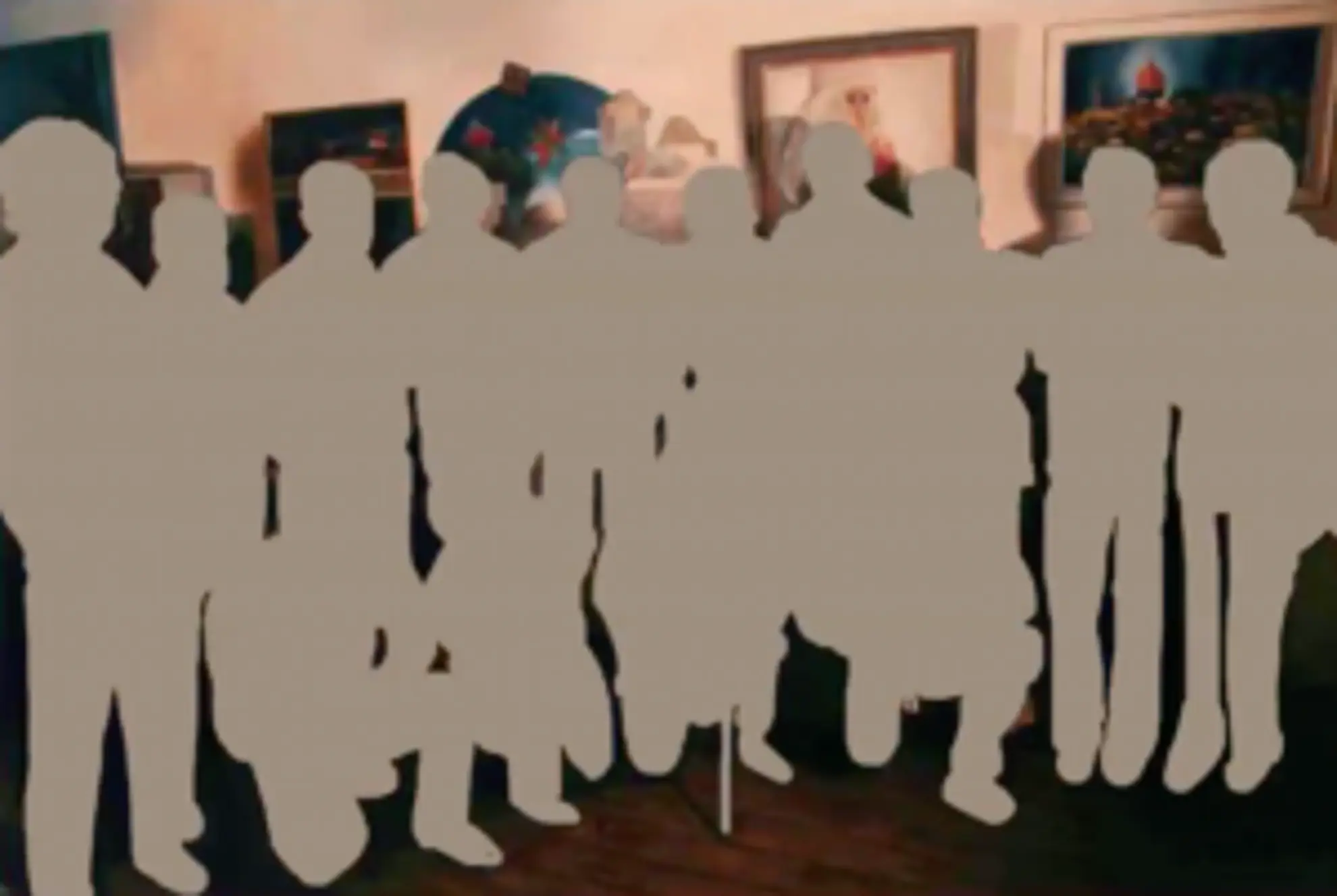
After some searching, I found that the 'photograph' could be attributed to artist Khalil Rabah. It was part of a project in which he sent some photographs of exhibitions in Palestine to be painted as realistic paintings in China. This group of works constituted the first Palestinian art archive made in China.
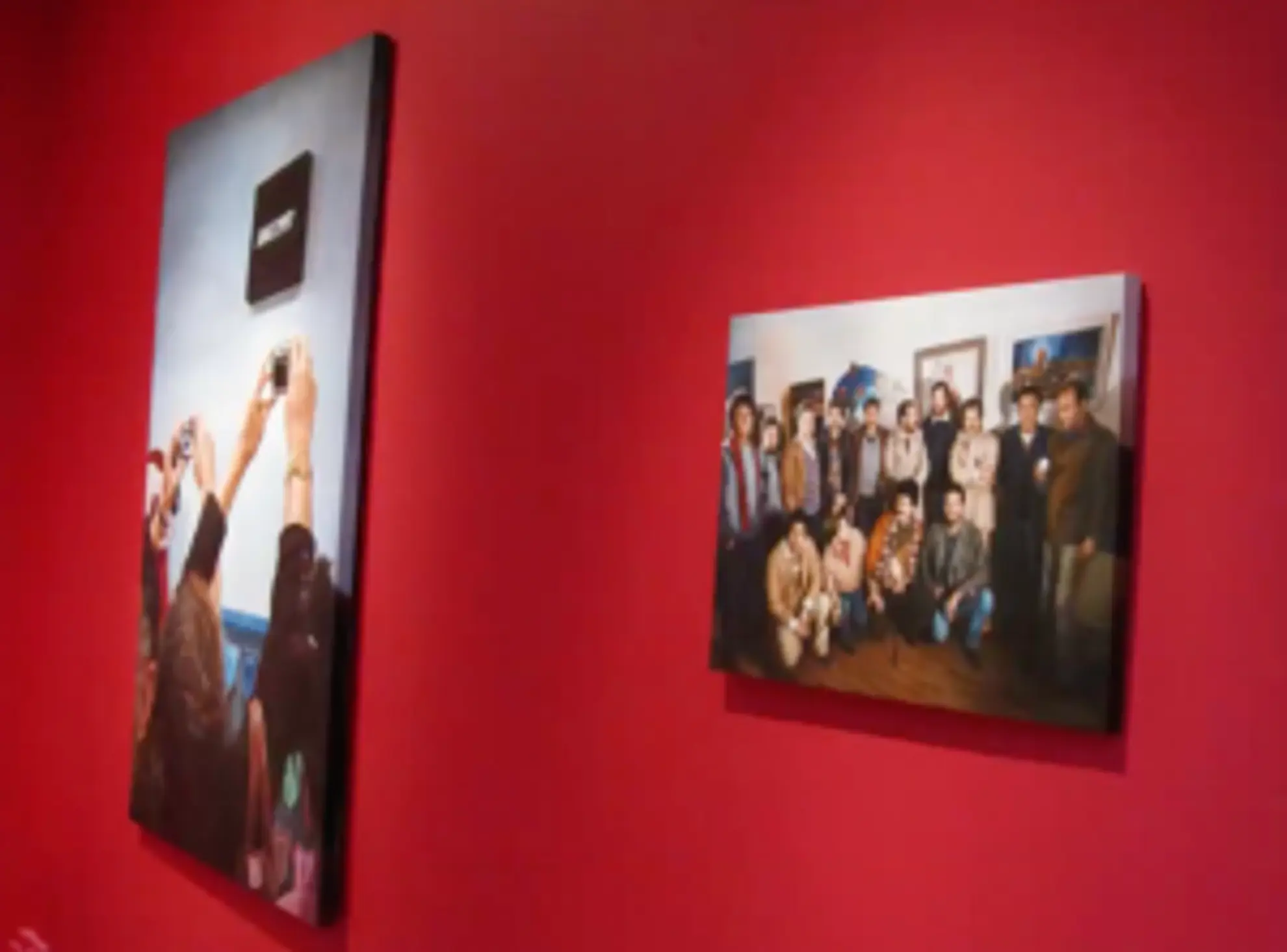
I was told that the paintings that appear in the background are currently either in museums outside Palestine, or that they were lost alongside other artworks that went missing throughout the history of Palestine, for different political reasons.
I got a detailed description of each of the paintings in the background by the participating artists. I asked them to recount even the smallest details, not only for the purpose of documentation – I wanted to go one step further, to situate myself as the painting's maker, to imagine what he saw while creating it.
Over time, after talking to many different people about him, I felt like I knew Sager Al-Qateel. He became so familiar to me, as if we had met before. Five years after encountering this photograph and getting to know him, I had a meeting with artist Vera Tamari, who was a part of the same artistic milieu as the fourteen artists in the photo. I was surprised when she told me that she was part of that exhibition, that for some reason, her presence had been withdrawn from the photograph
This led me to question not only the archive, but the different forms that we understand the past through – the photograph as a medium of memory, the archive as a form, and the museum as a context. The narrative of the Past – what is not in an archive and what is missing from the museum. What is being exluded from a narrative, or in other words: 'what is being hidden from us?' Are museums at all a suitable medium in a colonised context? A context in which the past is very present, in which its consequences unfold daily.
It is no surprise that the first Palestinian museum in Palestine – opened in 2016 – opened as an empty museum, a museum with no objects on display. The building as monument. A monument of a museum that is full of emptiness.
Wouldn't a radio, for example, work better than a museum in the Palestinian context, in which materiality is always in danger of being lost, damaged, stolen or destroyed?
In a context like Palestine where the materiality of the object is fragile and vulnerable, it is possible to think of an alternative tool of remembering, far from the notion of archive and museum, thinking outside the frame of modernity and its sharp distinction between the past, the present and the future. One might enact this by replacing objects with practices, and thinking of time instead of space.
These are a few practices where immateriality, or copies became a way in which people share memory, and continue culture:
A
In Palestine, there is an Israeli law which necessitates that personal archives become the property of the state of Israel if they are older than the state itself. As such, to protect these archives from the colonial institution who claims ownership of these photographs, letters, documents, and other forms of archives, people burn their archives.
I meet with Ahmed Houssni, who invited me to his house to have a look at his archive,
I didn’t have his permission to document or capture his family archive. It was burned, the ashes of photographs put in jars, each labelled with the year, the occasion of the photograph and where it was captured. Ahmed and his family remember these photographs by heart, they could narrate each detail perfectly.
B
In a letter written by curator and art critic Lara khaldi, she discusses the disappeared PLO film archive in Beirut. Quoting Lara, “The PLO had a film wing which was founded in the late 1960’s, where hundreds of reels, documentary and feature films were stored. The archive disappeared when the Israeli military bombed Beirut in 1982. Some believed that it was destroyed by the Israeli forces, others that it was buried in حرش بيروت, an urban park in the heart of Beirut.
Meanwhile, Subversive Film – a research film collective – started tracing and finding copies of these films from the archive. It turns out that every time a foreign filmmaker or agency wanted to make a film or a newsreel about the Palestinian struggle in the 1970’s, they used footage from this archive. So this archive was saved in little bits and pieces all over the world. And completed feature films and documentaries were found in individual and institutional archives because copies traveled for film festivals.
A recent research film by Israeli filmmaker and curator Rona Sela, shows that the archive was seized by the Israeli military and locked away in a secret military archive.
From a material point of view, the film archive in the secret military base and the footage found across international film festivals seem to be identical, but they are not. The copy in this case becomes a means of emancipation.
C
I took these photographs while on a tour to “see” some artworks that were made by Palestinian prisoners. Usually these works would be taken by wardens, but the inmates manage every time they have a visitor to smuggle some of them outside of the prison walls. Each artwork is then buried safely underground.
These pictures show the location of the buried artworks. We never see the actual work, only the piece of land that in which it is buried. Recounting some wisdom that his father had shared with him, our guide –a former prisoner – said to us that "only the earth doesn't tell its secrets."
Noor Abuarafeh is a Palestinian artist who lives and works in Jerusalem. She works primarily with video, performance, publication, and text. Her work addresses the memory, history, archive, and the possibilities of tracing absence. Abuarafeh’s videos and performances are text based that questions the complexity of history, how is it shaped, constructed, made, perceived, visualized and understood. Her videos and socially engaged artworks are based on interviews, workshops and other shared activities.
